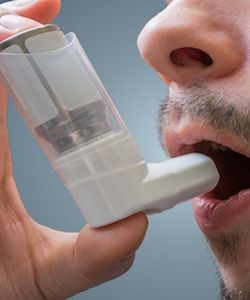Article
What Kinds of Studies Does Asthma Research Need?
Author(s):
In an ideal world, interventions would have a pilot study before RCT.

Elizabeth Matsui, MD, MHS, professor of pediatrics at Johns Hopkins University in Baltimore discussed what kinds of studies are needed in asthma during a presentation at the annual meeting of the American Academy of Allergy, Asthma, and Immunology (AAAAI 2017) in Atlanta, Georgia.
In 2008, a study conducted among AAAAI members from that year revealed that 75% of them reported emphasizing the importance of environmental control and 66% reported providing environmental control educational materials to their patients. However, a survey created by the US Environmental Protection Agency showed that only around 30% of patients or parents of pediatric patients implemented the recommendations in such “essential” materials.
Why is there such a discrepancy here? Skepticism on the part of patients or their caregivers plays a part in why trial results are difficult to translate to real-world clinical practice. “Adherence to medication in those studies are typically very high,” Matsui explained. However, there is limited evidence showing that randomized controlled trials (RCTs) translate to public health practice.
In Matsui’s eyes, asthma interventions aren’t tested well enough before starting a RCT. “I don’t think we have a good understanding of how they work,” she said.
There are unique challenges when it comes to conducting environmental RCTs. For efficacy to be accomplished, the measure being tested must reduce targeted exposures in the active treatment arm to a substantially greater degree than in the control arm. Crediting positive outcomes to a change in the home is difficult. Populations are often diverse between RCTs, and indoor and outdoor exposures can be difficult to track. These factors make it challenging to replicate studies to prove efficacy.
There are other issues with the populations recruited for studies. Those who agree to take part in the study may already be motivated to make changes to their home environment. Methods to reduce the risk of contamination and crossover can be expensive and difficult to implement.

Using audience response technology, Matsui asked the crowd of nearly 100 healthcare providers what the common reasons for lack of efficacy of an environmental intervention trial are:
A. Exposure reduction in the active treatment group is not substantially larger than that in the control group
B. Contamination whereby the control group receives the intervention
C. A only
D. B only
E. A and B
All of the physicians who participated in the poll answered correctly with E.
One RCT which included children ages 4 to 12 compared high intensity to low intensity arms. The participants and parents were given educational materials on the environment along with other resources, and were offered assistance. The outcome was “significantly underwhelming,” as described by Matsui. High intensity measures reduced exposure more than low intensity only for condensation and dust. However, there was no difference in mold, rodents, cat allergen, dog allergen, dust mite allergen, among others.
In order to move the needle forward, Matsui recommends that every study published needs to show not just statistical significance, but clinical significance as well. If not, physicians can walk away with the wrong message. An assumption could be that exposure was reduced when that’s not really the case. With this comes the need to better understand the amount of exposure reduction needed to be considered a clinical effect.
In an ideal world, there would be pilot studies for asthma interventions before they reach the RCT stage. However, Matsui recognized that funding is a barrier.



